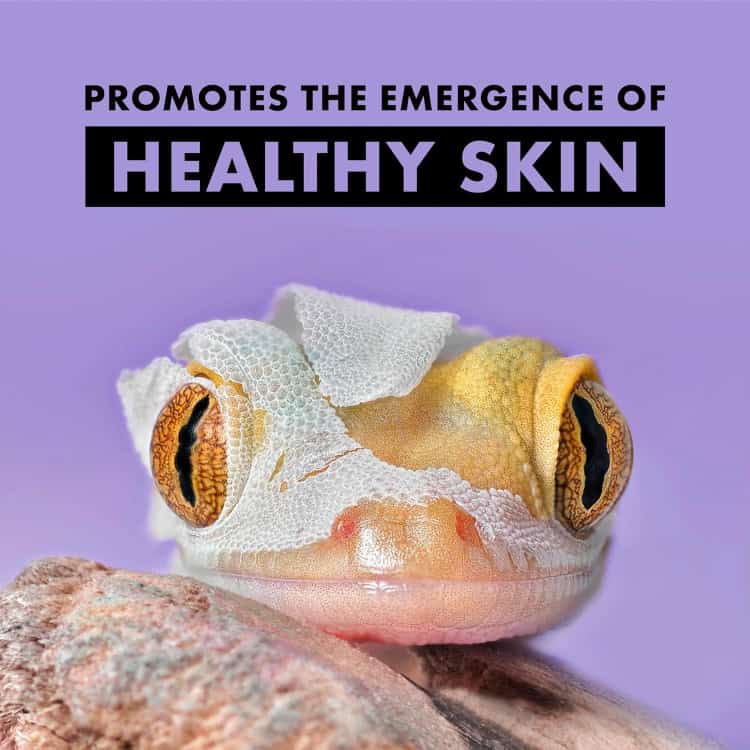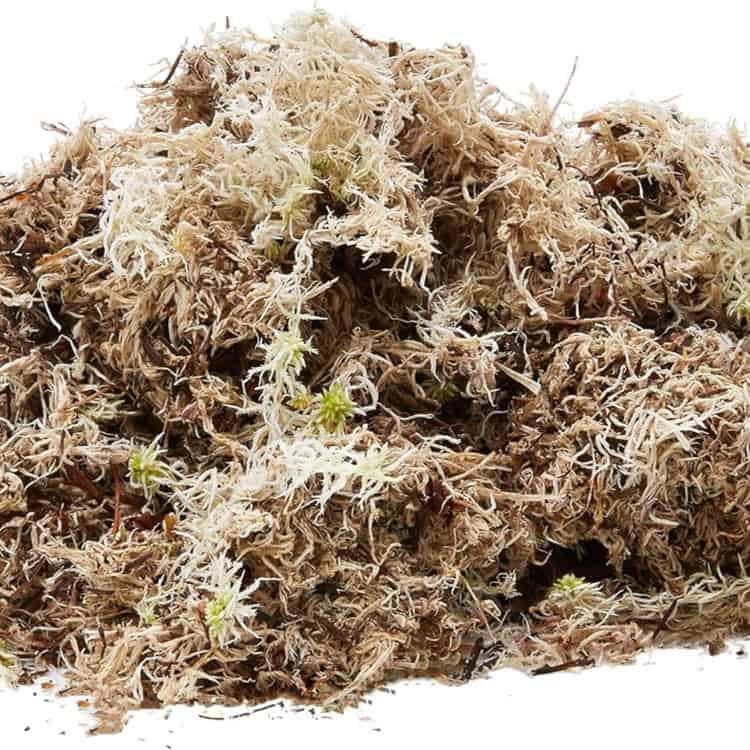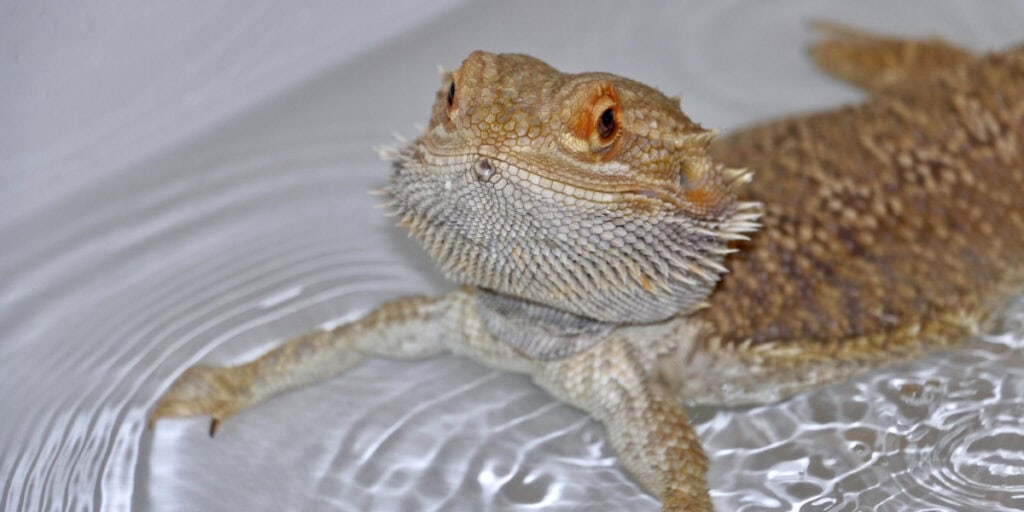Bearded Dragon shedding, also known as ecdysis, is a natural process where the reptile sheds its old skin to accommodate new growth. This essential process promotes the health and well-being of the Bearded Dragon by removing old, damaged, or dead skin cells and revealing a fresh layer underneath. Shedding is crucial for growth and adaptation to changing environments.
During shedding, Bearded Dragons may appear duller in color and more irritable than usual due to the discomfort and itchiness associated with the process. Owners should be aware of these changes to provide appropriate care and support. Unlike some reptiles that shed their skin all at once, Bearded Dragons shed in patches.
The process typically begins at the head and progresses down the body, including limbs and tail. Small pieces of skin may flake off from various areas over time. Shedding is a continuous process throughout a Bearded Dragon’s life as they continue to grow and develop.
Understanding the shedding process is vital for Bearded Dragon owners to provide proper care and support during this natural occurrence. By recognising the signs and stages of shedding, owners can ensure their pet’s comfort and health throughout the process.
Key Takeaways
- Bearded Dragon shedding is the process of the reptile shedding its old skin to make way for new growth.
- Bearded Dragons shed their skin regularly, with younger dragons shedding more frequently than older ones.
- Signs that your Bearded Dragon is about to shed include dull skin, loss of appetite, and increased hiding behavior.
- During Bearded Dragon shedding, it’s important to provide a humid environment and avoid handling the dragon too much.
- Common problems during Bearded Dragon shedding include retained shed and skin infections, which can be prevented with proper care and attention.
When do Bearded Dragons shed?
Factors Influencing Shedding
The shedding process can be influenced by various factors such as diet, hydration, temperature, and overall health. It is essential for Bearded Dragon owners to monitor their pet’s shedding patterns and make adjustments to their care routine as needed. Environmental factors like temperature and humidity also play a significant role in the frequency of shedding.
Optimal Environment for Shedding
Bearded Dragons require a warm and dry environment to support healthy shedding. If the enclosure is too humid or too cold, it can disrupt the shedding process and lead to complications. It is crucial for Bearded Dragon owners to create an optimal environment for their pet, with the right temperature and humidity levels to support healthy shedding.
Supporting Healthy Shedding
By understanding when Bearded Dragons shed and the factors that influence the shedding process, owners can provide the necessary care and support for their pet during this natural occurrence. This knowledge enables owners to make informed decisions about their pet’s care, ensuring a healthy and thriving Bearded Dragon.
How to tell if your Bearded Dragon is about to shed?

There are several signs that indicate when a Bearded Dragon is about to shed its skin. One of the most noticeable signs is a change in their appearance. The reptile’s skin may appear dull or faded in color, and they may have a cloudy or bluish tint to their eyes.
This is because the old skin is starting to separate from the new skin underneath, causing a temporary change in their appearance. Additionally, Bearded Dragons may become more irritable or agitated during this time, as the shedding process can be uncomfortable and itchy for them. Another sign that a Bearded Dragon is about to shed is an increase in scratching or rubbing against objects in their enclosure.
This behavior helps them loosen the old skin and facilitate the shedding process. Bearded Dragons may also spend more time soaking in their water dish or seeking out damp areas in their enclosure to help soften the old skin and make it easier to shed. By observing these signs, Bearded Dragon owners can anticipate when their pet is about to shed and provide the necessary care and support during this time.
What to do during Bearded Dragon shedding?
During Bearded Dragon shedding, it is important for owners to provide the necessary care and support to help facilitate the process. One of the most important things to do during shedding is to ensure that the reptile has access to a shallow water dish for soaking. Soaking can help soften the old skin and make it easier for the Bearded Dragon to shed.
Owners should also monitor the humidity levels in the enclosure, as a slightly higher humidity level can also aid in the shedding process. It is important not to force or assist in removing the old skin, as this can cause injury or stress to the Bearded Dragon. Instead, owners can gently mist the reptile with water or provide a damp cloth for them to rub against if they are having difficulty shedding in certain areas.
Additionally, it is important to maintain a clean environment during shedding, as any leftover shed skin can lead to bacterial or fungal infections. By providing the necessary care and support during shedding, owners can help their Bearded Dragon through this natural process.
Common problems during Bearded Dragon shedding
While shedding is a natural process for Bearded Dragons, there are some common problems that can arise during this time. One of the most common issues is incomplete shedding, also known as retained shed. This occurs when pieces of old skin do not come off completely, leading to irritation and potential infection.
Retained shed often occurs in areas with folds or creases, such as around the toes or tail. Owners should monitor their pet closely during shedding and take steps to help remove any retained shed if necessary. Another common problem during Bearded Dragon shedding is dehydration.
The reptile’s increased scratching and rubbing behavior can lead to dryness and irritation, especially if they do not have access to a water dish for soaking. Dehydration can exacerbate the shedding process and lead to complications such as retained shed or skin infections. It is important for owners to ensure that their pet has access to clean water at all times and monitor their hydration levels during shedding.
How to help your Bearded Dragon during shedding

Creating a Comfortable Environment
Providing a shallow water dish for soaking is essential, as it helps soften the old skin and make it easier for the reptile to shed. Owners should also monitor the humidity levels in the enclosure, as slightly higher humidity can aid in the shedding process.
Facilitating Shedding
Additionally, misting the reptile with water or providing a damp cloth for them to rub against can help facilitate shedding in areas where they are having difficulty. However, it is important not to force or assist in removing the old skin, as this can cause injury or stress to the Bearded Dragon. Instead, owners should allow the reptile to shed naturally and provide support as needed.
Maintenance and Hygiene
Keeping the enclosure clean is also crucial during shedding, as any leftover shed skin can lead to bacterial or fungal infections. Regular cleaning and disinfection of the enclosure can help prevent these issues.
Supporting a Smooth Shedding Process
By providing the necessary care and support during shedding, owners can help their Bearded Dragon through this natural process. With patience, attention to detail, and a clean environment, owners can ensure a smooth and comfortable shedding experience for their pet.
Bearded Dragon shedding is a natural process
In conclusion, Bearded Dragon shedding is a natural process that occurs regularly throughout their lives. Understanding when Bearded Dragons shed and how to support them during this time is crucial for owners to ensure their pet’s health and well-being. By providing access to a shallow water dish for soaking, monitoring humidity levels, and maintaining a clean environment, owners can help facilitate the shedding process for their Bearded Dragon.
It is important not to force or assist in removing the old skin, but instead provide gentle support as needed. By understanding the shedding process and providing the necessary care and support, owners can help their Bearded Dragon through this natural occurrence with ease and comfort.
If you’re interested in learning more about reptile care, you might also want to check out this article on why leopard geckos stop eating. It’s important to understand the specific needs and behaviors of different reptiles in order to provide them with the best care possible.
FAQs
What is bearded dragon shedding?
Bearded dragon shedding is the process by which a bearded dragon sheds its old skin to make way for new growth. This is a natural and necessary process for the health and growth of the bearded dragon.
How often do bearded dragons shed?
Bearded dragons shed their skin regularly as they grow. Younger bearded dragons may shed every few weeks, while older bearded dragons may shed every few months.
What are the signs that a bearded dragon is about to shed?
Signs that a bearded dragon is about to shed include dull or cloudy eyes, loss of appetite, and a change in behavior. The skin may also appear dull and flaky as the shedding process begins.
How can I help my bearded dragon during shedding?
You can help your bearded dragon during shedding by providing a humid hide or bath to help soften the old skin and make it easier to shed. It’s also important to ensure that the bearded dragon has access to proper lighting, temperature, and a balanced diet to support healthy shedding.
Is it normal for bearded dragons to eat their shed skin?
Yes, it is normal for bearded dragons to eat their shed skin. This behavior is natural and provides the bearded dragon with important nutrients. However, if the shedding process seems difficult or the bearded dragon is having trouble shedding, it’s important to consult a veterinarian.




